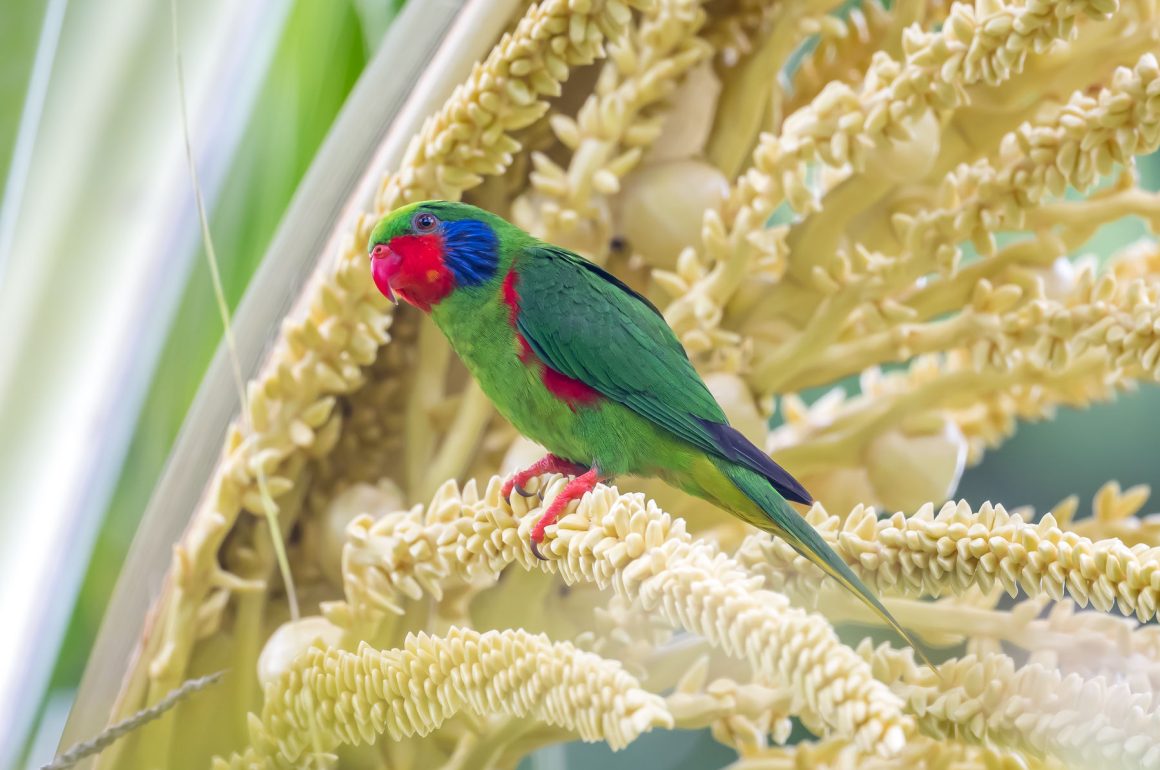
Parrots are among the most threatened of all birds – of the 202 parrot species of the Old World and Africa, only a bit more than half (54%) are listed as Least Concern. Furthermore, Indonesia is the country with the highest priority for parrot conservation given the number of species and threats there. Parrots are also by far the most traded and the fastest declining group of birds – and almost half of the parrot species in the Wallacean region of Indonesia are affected by trapping, a higher share than anywhere else in the world (source).
I am mentioning all this partly because it is important, and partly because it is an excuse for some of the comparatively bad photos in this post. Taking pictures of parrots on Halmahera can be a bit frustrating, at least if you are only on the island for a few days – many species are quite shy, which makes for bad photos taken from a distance.
And that is true even though of the six species I managed to see, only the Chattering Lory is listed as Vulnerable (all the others mentioned further down are listed as Least Concern).

If you are an expert in identifying parrots (of course, I am not), the absence of a yellow patch on the back of these birds indicates that this is likely to be the form present on Halmahera.

This species has been particularly threatened by the local pet trade. One paper describes it as the most commonly kept bird on Obi, another Indonesian island, and estimates that 6000 Chattering Lorys are caught each year.

The local price for a lory is about 18 USD (source). Driving species to near extinction is cheap.

Another paper states that the Chattering Lory has been trapped to near extinction on several islands in Indonesia.

The Moluccan Hanging Parrot is more or less an endemic to Halmahera, give or take a few nearby islands.

It was named Loriculus amabilis (“loveable”) by Alfred Russel Wallace, the guy who ended up being almost famous for coming up with the theory of evolution if he had not been beaten by Darwin by an inch.

Incidentally, a paper titled “Alfred Russel Wallace deserves better” states “However, being a more modest, self-deprecating man than Darwin, and lacking the latter’s establishment connections, Wallace’s contribution to the theory of evolution was not given the recognition it deserved and he was undoubtedly shabbily treated at the time.”

On the other hand, maybe Wallace just got what he deserved, given this information on him: “The second half of his life was by and large devoted to what from today’s perspective are utterly lost causes: He became a passionate advocate of spiritualism, supported land nationalization, and fervently objected to compulsory smallpox vaccination.” Two out of three wrong, I would say (and most people would probably say three out of three wrong) …
The Red-flanked Lorikeet has a scientific name that is somewhat similar in spirit to the previous one.
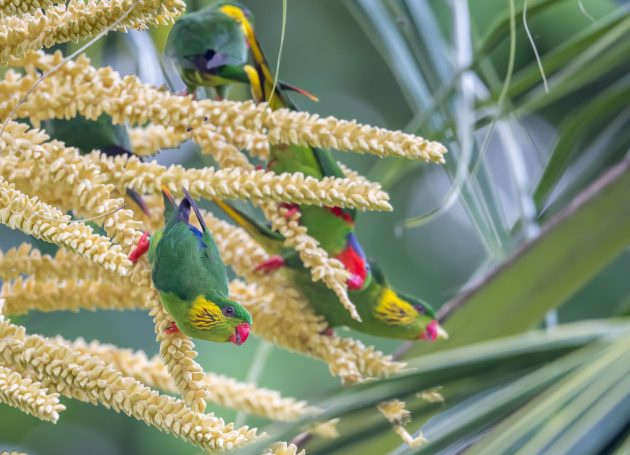
Hypocharmosyna placentis indicates that the species is charming or pleasing (placentis)

I am not sure whether it is good or bad for the species (probably good, despite the tragic outcome for individuals) – Cornell states that the Red-flanked Lorikeet is “not a popular target of traders, mainly because most of the birds taken die before reaching the traders!”

The male has some red in its plumage …

… while the female insists that red makes her look fat.

If you enjoy feather mites more than birds, check out the paper titled “New feather mite taxa of the Rhytidelasma Gaud, 1966 generic group (Astigmata: Pterolichidae) from the red-flanked lorikeet Charmosyna placentis placentis (Psittacidae)”
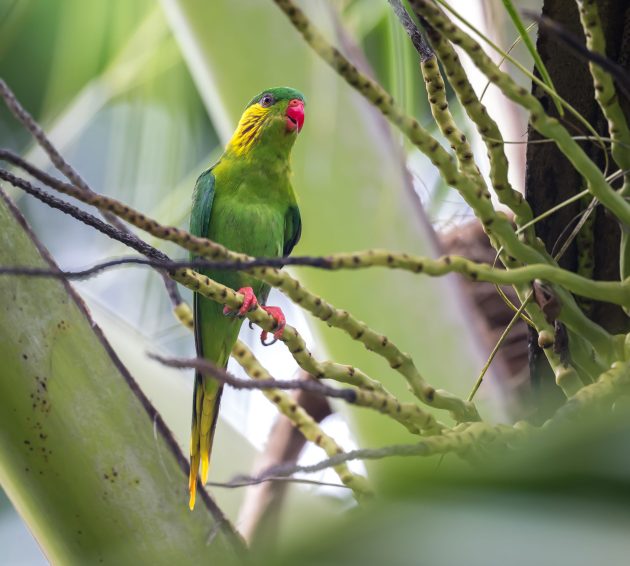
While the Moluccan King Parrot is described as being rare and threatened on Halmahera …

… the trade pressure on it is also not great due to the exceptionally high post-capture mortality rates.

I feel very uneasy about keeping parrots as pets, though I am not sure there is a realistic alternative for birds bred in captivity. So, I am not sure what to make of pet-keeping advice on the Moluccan King Parrot such as in this source:

“They do well with people who don’t have a busy and hectic lifestyle, and that can make them a perfect pet bird for seniors. The Moluccan King Parrot prefers to spend time with a feathered friend, or simply occupied with their toys, so they won’t be too demanding for any owner. In general, these parrots are ideal for people looking for docile, friendly birds that don’t require much fussing over to be happy.”

The Violet-necked Lory seemed to be particularly shy on Halmahera even though it is listed as Least Concern. But maybe I just need an excuse for the substandard photos.

On the other hand, Violet-necked Lorys are believed to be traded illegally at growing rates (source). And in the Halmahera region, the situation may be particularly bad: “A 2018 case study in North Maluku revealed that nearly every village was involved in the hunting of parrots” (source). Although the situation has improved significantly due to intensive conservation efforts, similar issues persist in the southern regions of Maluku”

Finally, the Red-cheeked Parrot, probably my favorite among the parrots I saw on Halmahera.

Its scientific name is derived from a man who must have been so great that they used his name twice (Geoffroyus geoffroyi).

This was Prof. Étienne Geoffroy-Saint-Hilaire (1772-1844), a French zoologist.
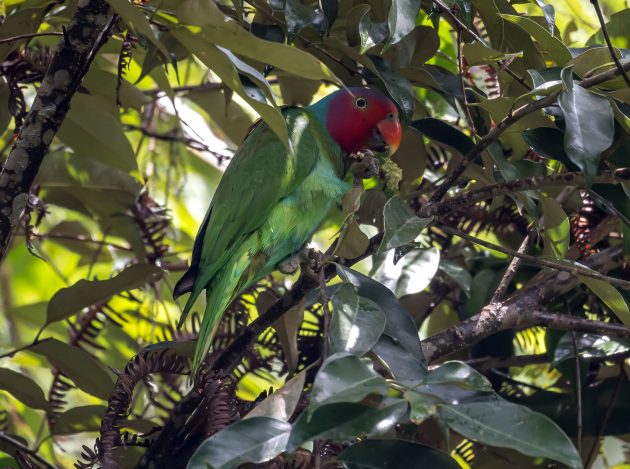
Darwin mentioned him in “The Origin of the Species”: “Geoffroy St. Hilaire has insisted strongly on the high importance of relative connexion in homologous organs: the parts may change to almost any extent in form and size, and yet they always remain connected together in the same order. “

UC Berkeley (though not the chemistry department, where I once did a postdoc, but rather the Museum of Paleontology) praises the man for another reason, unfortunately without giving any more details: “When the Reign of Terror struck, Geoffroy risked his life to save some of his teachers and colleagues from the guillotine.”

The species seems to be doing ok so far – Cornell describes it as common to abundant throughout much of its range, with an estimated 80 birds/km² on Halmahera.
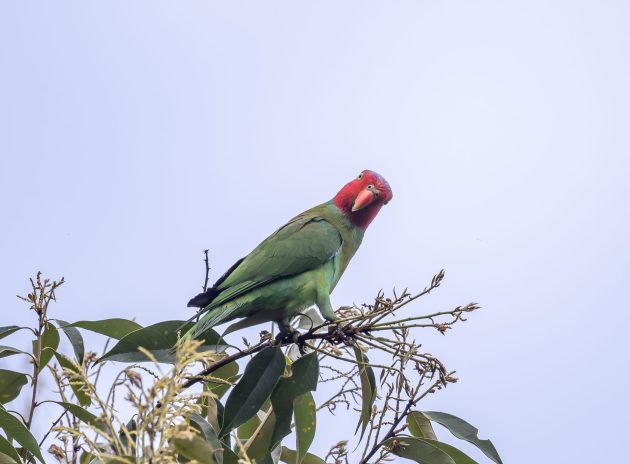
ChatGPT provides an example of excessive choice: “Colgate offers over 40 different types of toothpaste in various combinations of flavors, formulations, and benefits. Consumers can choose from options like ‘Whitening with Charcoal,’ ‘Enamel Health,’ ‘Cavity Protection with Fluoride,’ ‘Sensitive Teeth,’ ‘Fresh Breath,’ and many more.’

So, we should ask evolution: Do we really need 17 subspecies of the Red-cheeked Parrot?
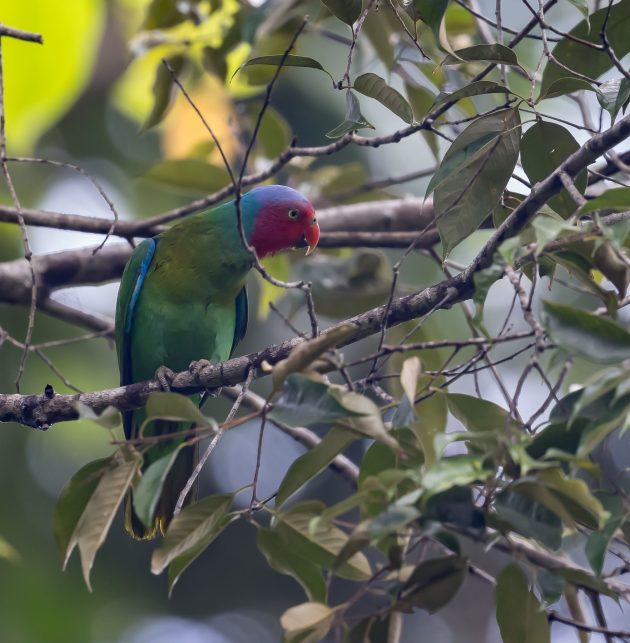












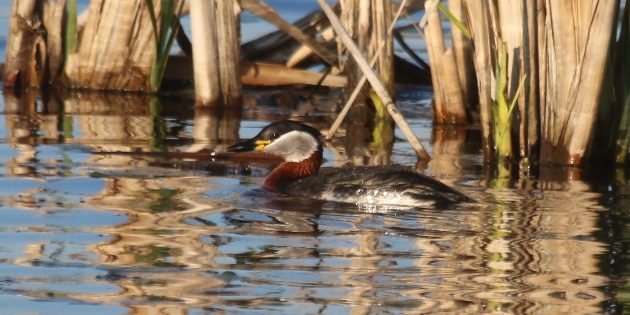
Yes, we DO need more parrots!